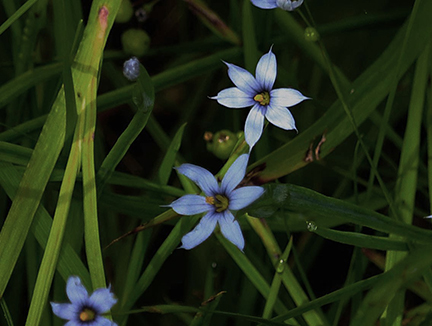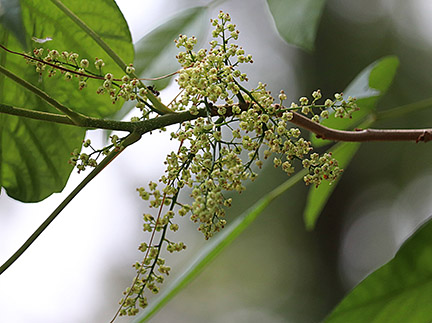Happy Mystery Monday! Can you guess what is pictured in the photo below?

The answer to last week’s mystery is poison ivy, Toxicodendron radicans, pictured in photo below:

Poison ivy is native to every State except California, Alaska, and Hawaii. It can grow as a small plant, a shrub, or a climbing vine and it is resilient! It thrives in soils of all textures, including clays, silts, loams, sand, and more.
All parts of the poison ivy plant, including the stem and roots, contain and secrete a nonvolatile, colorless oil, urushiol, that affects the skin. According to the American Academy of Dermatology, about 50 million people get a poison ivy rash each year, making it one of the most common allergies in the United States.
If a rash doesn’t occur with first contact, it likely will with second contact. In addition, the body doesn’t build immunity to urushiol. The more times the skin is exposed to it, the worse the break out.
Urushiol oil is very durable, lingering for five or more years after the poison ivy plant has died. Inhaling urushiol oil from the smoke of burning poison ivy likely means a trip to the ER.
Poison ivy flowers are rather inconspicuous and usually not noticed by gardeners, but they also carry urushiol oil. The subsequent fruits are smooth, greenish-white berries that form in clusters about the size of currants. Birds and other wildlife eat the berries and spread the seed in their droppings, spreading poison ivy just about anywhere.
Poison ivy has compound leaves with three leaflets, giving rise to the old saying, “Leaves of three, let it be,” although the leaves are more accurately described as leaflets.
In vine form, poison ivy sprouts thousands of brown hairs that grasp the bark of its host tree. As the vine climbs toward the canopy and matures, the stem gets woodier and increases in diameter.
Mystery Monday is sponsored by the Spy Newspapers and Adkins Arboretum.



Gretchen Celestino says
Thank you, very interesting.
Rebecca Ellison says
Blue-eyed grass … love ’em!
Rita connolly says
Periwinkle?
Blair Potter says
Blue-eyed grass